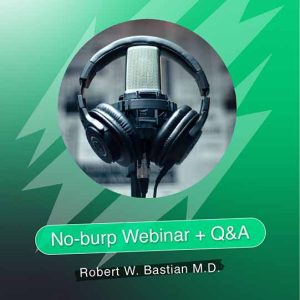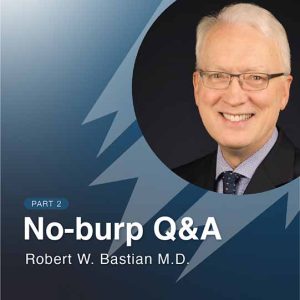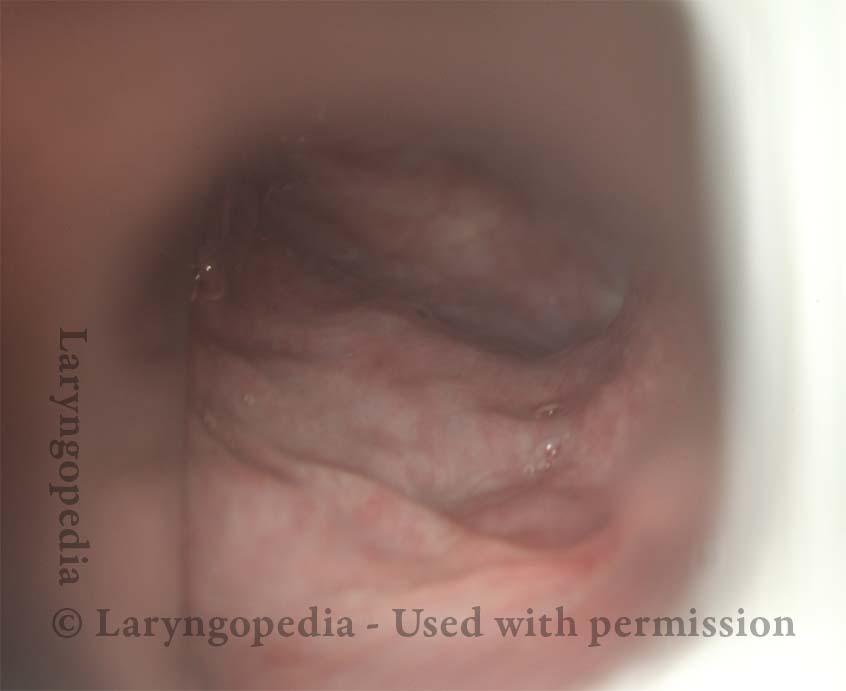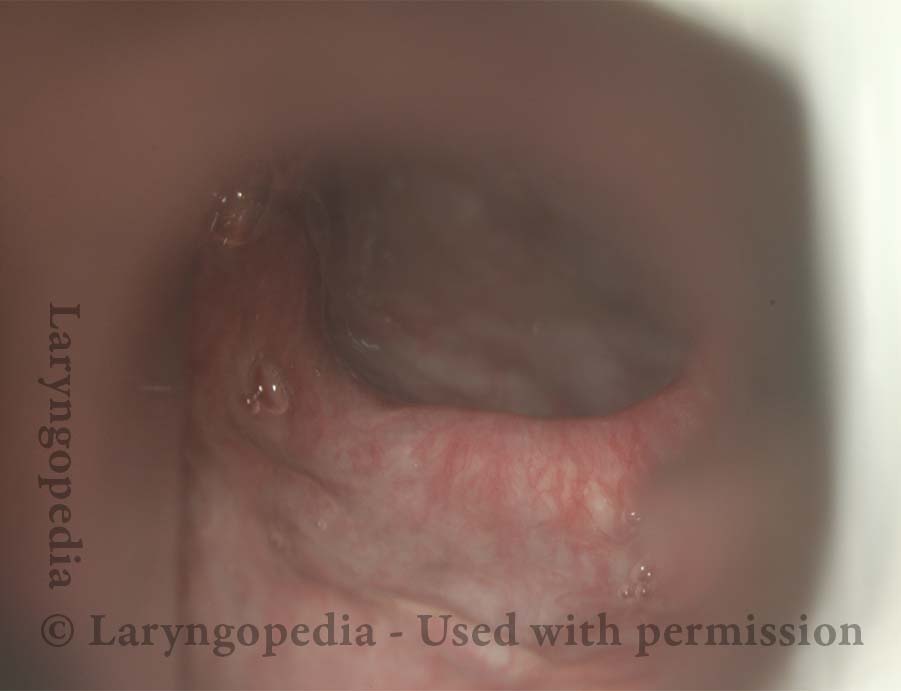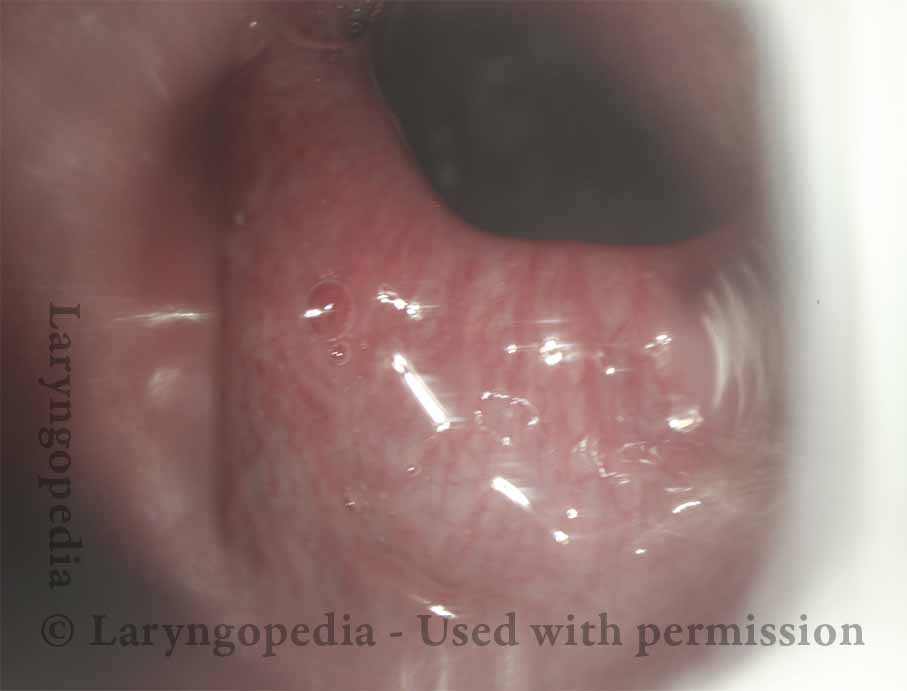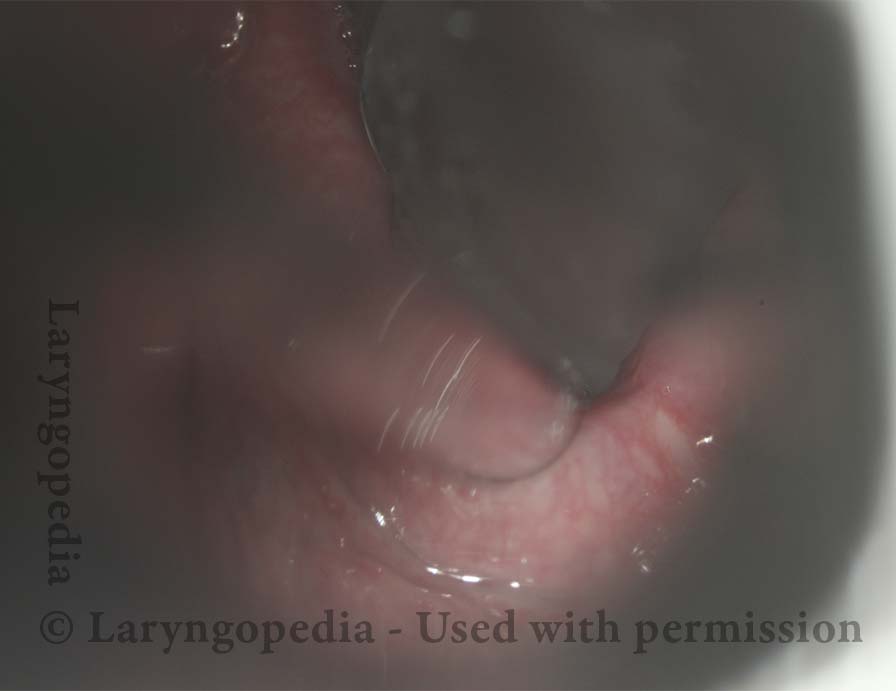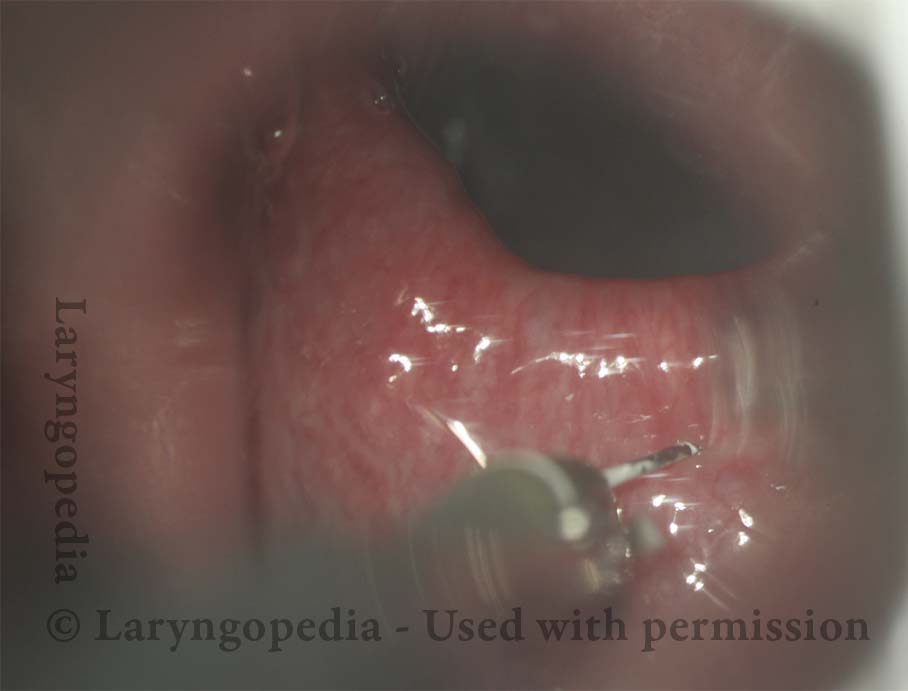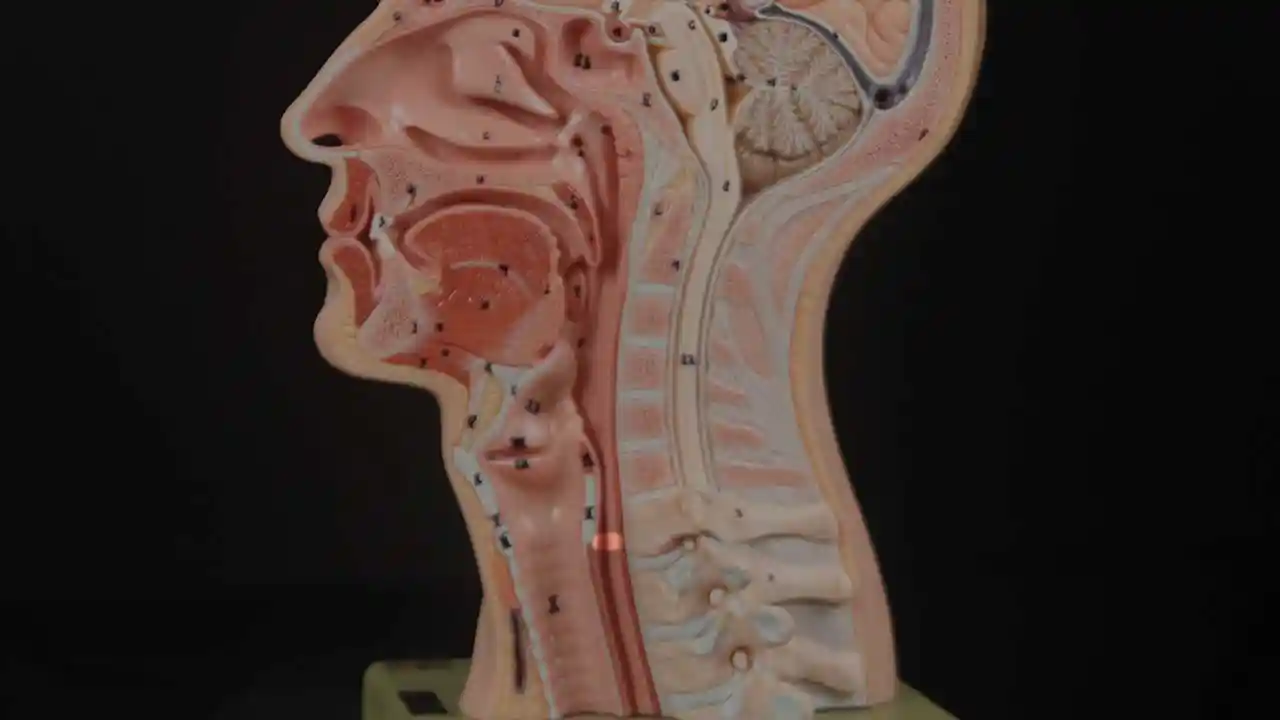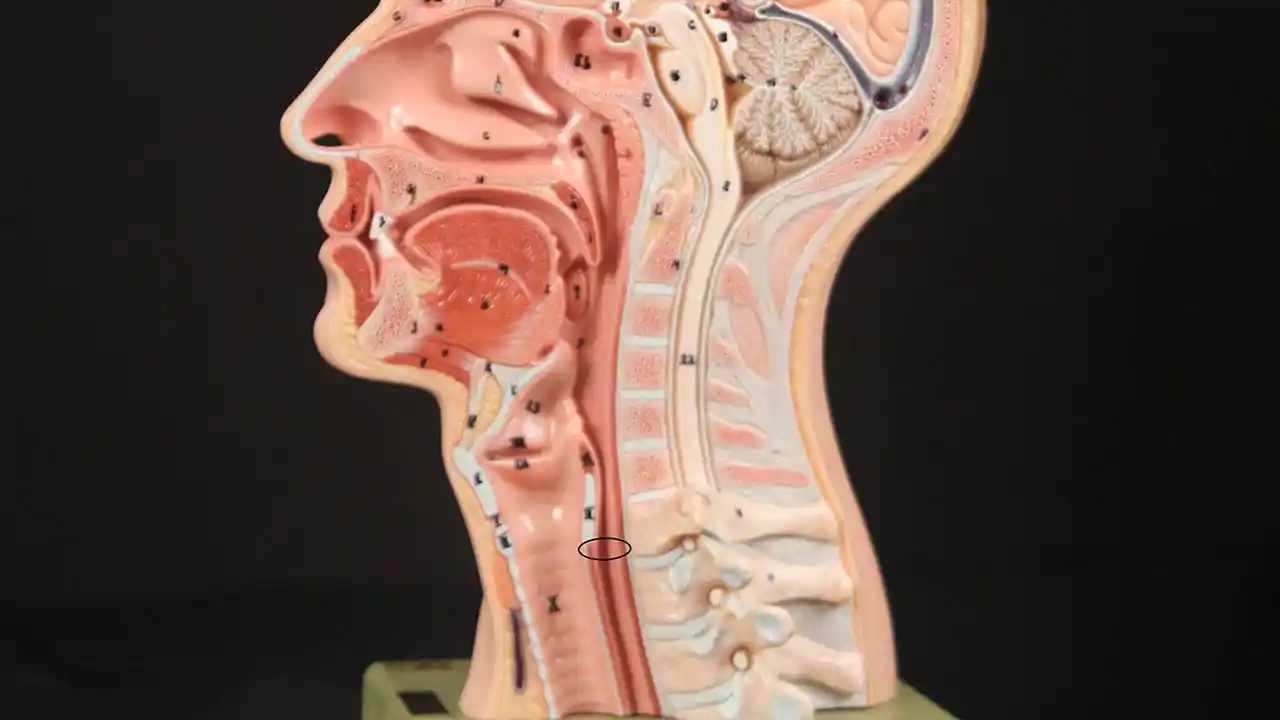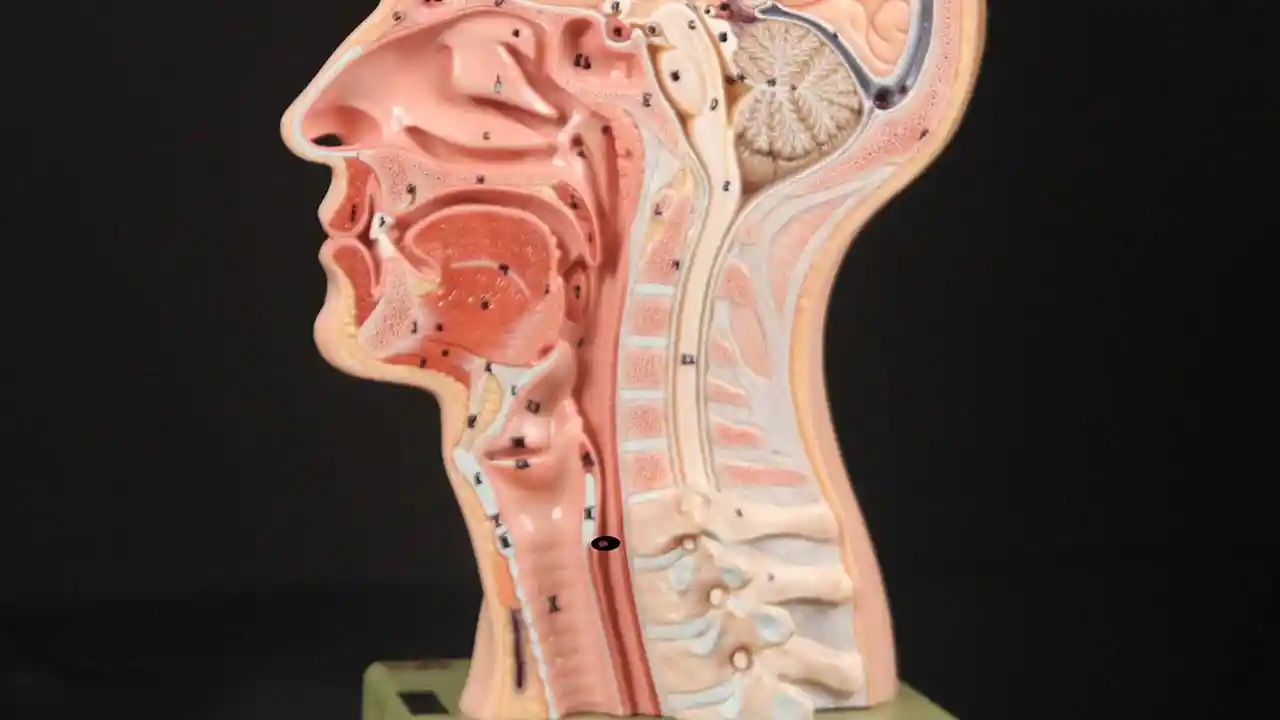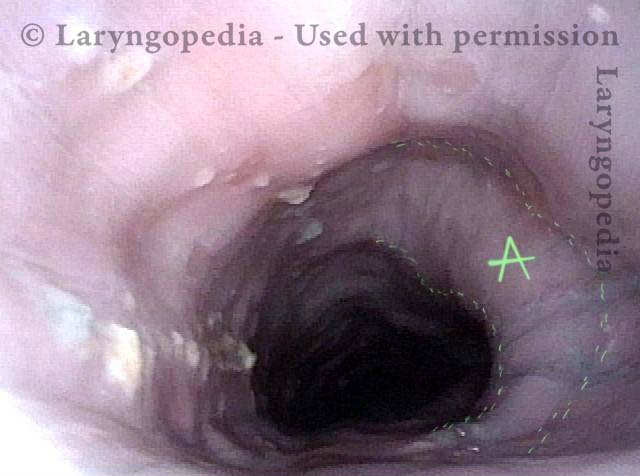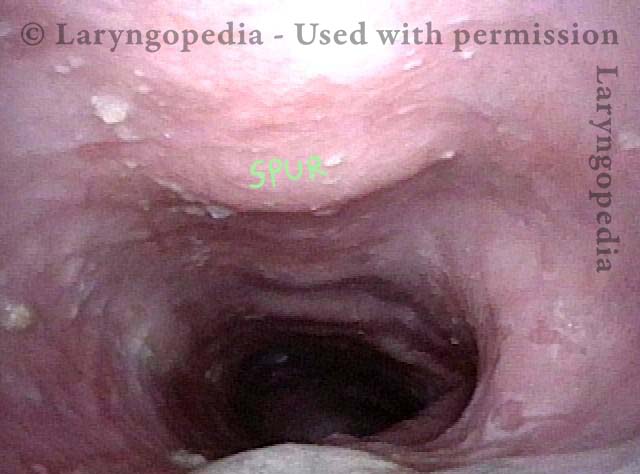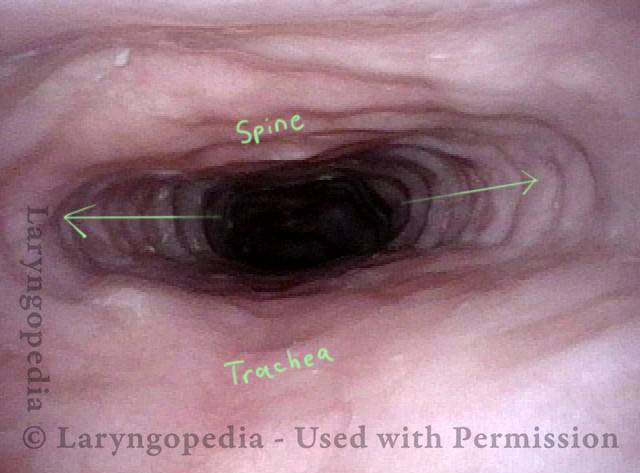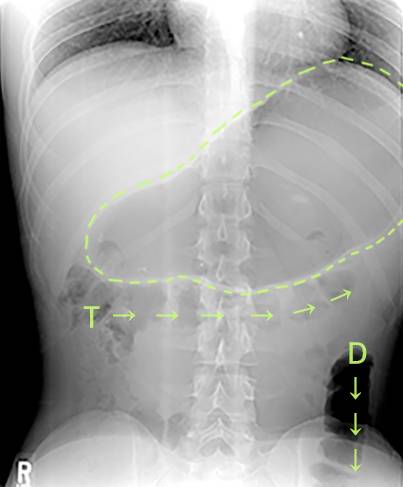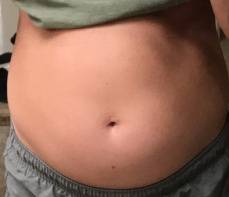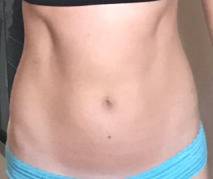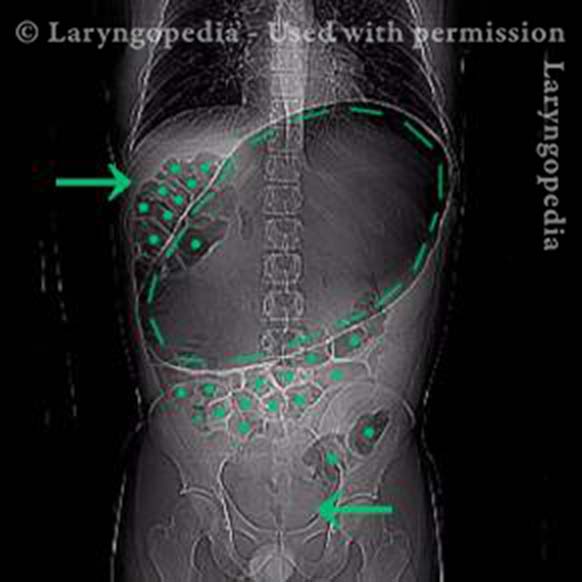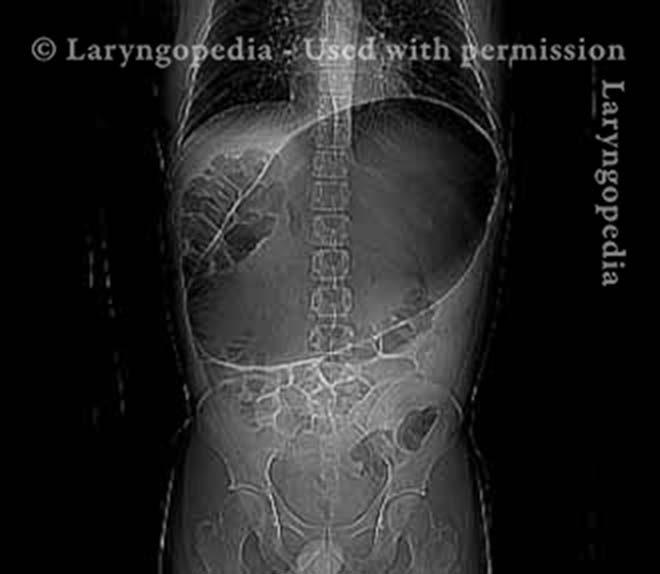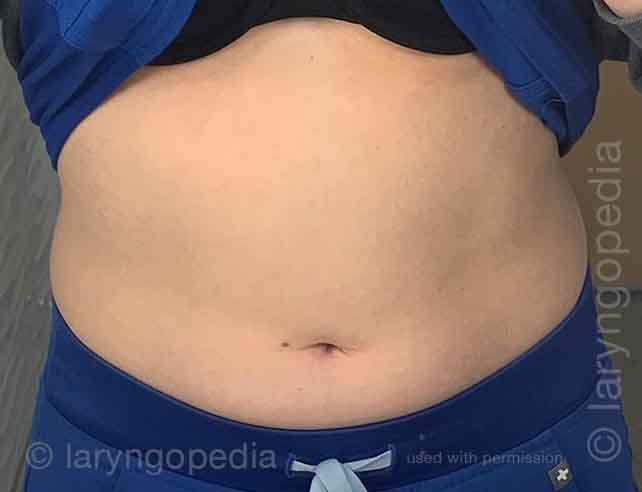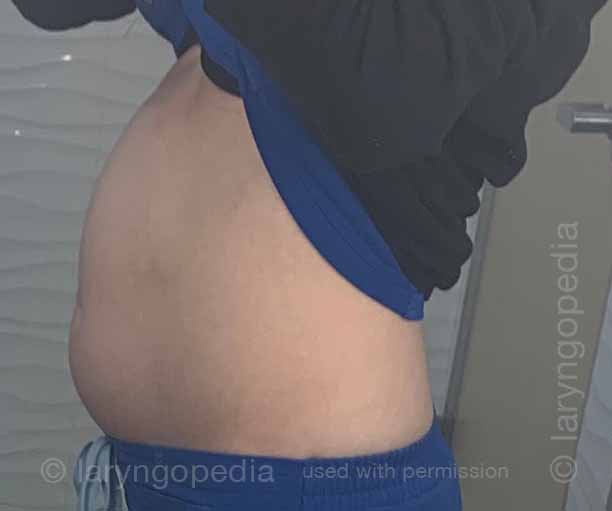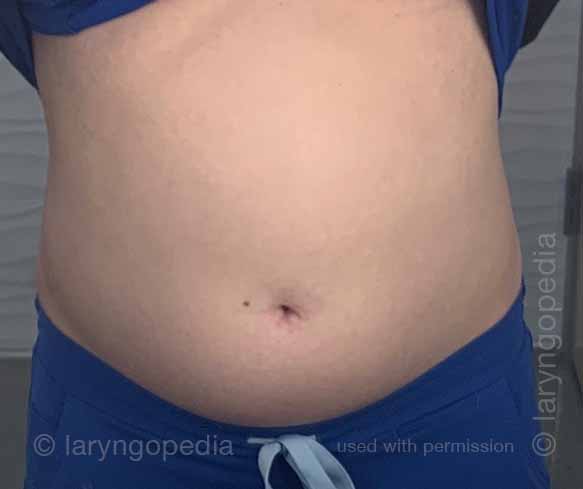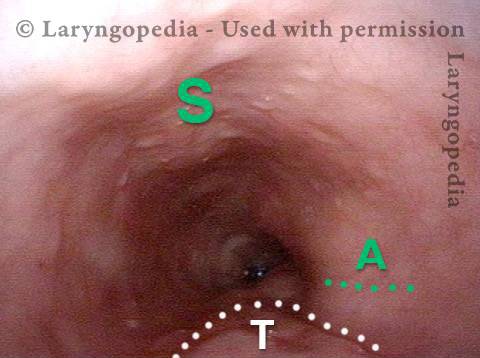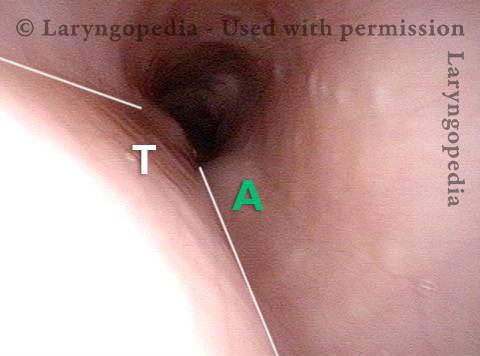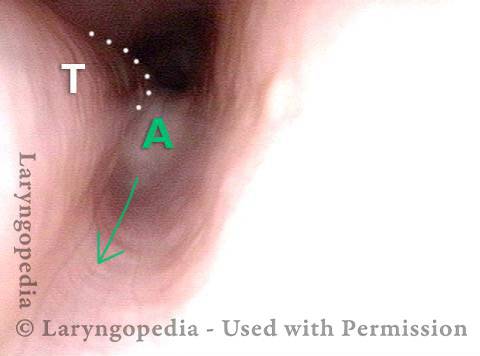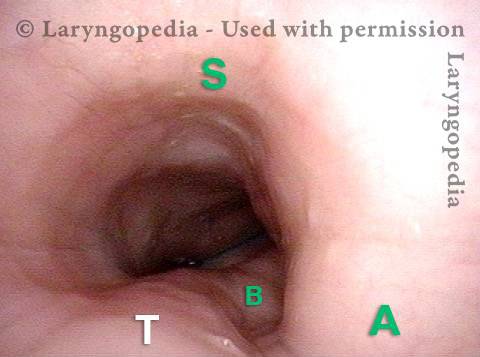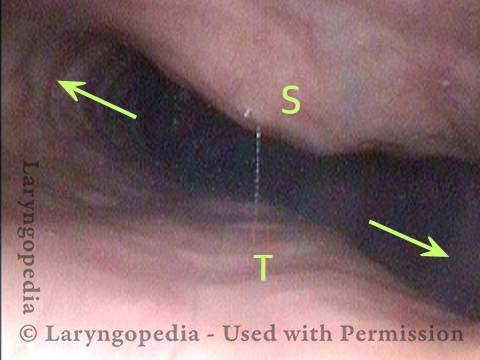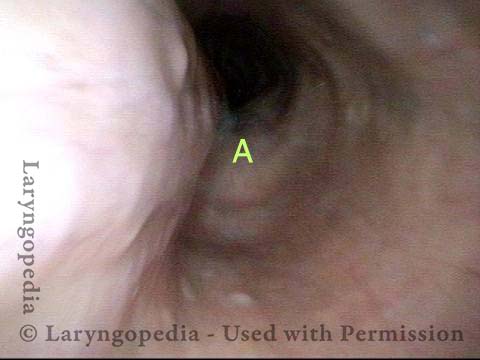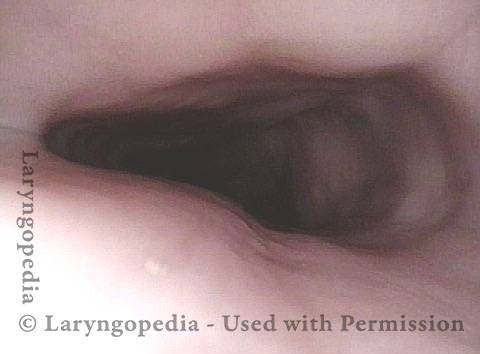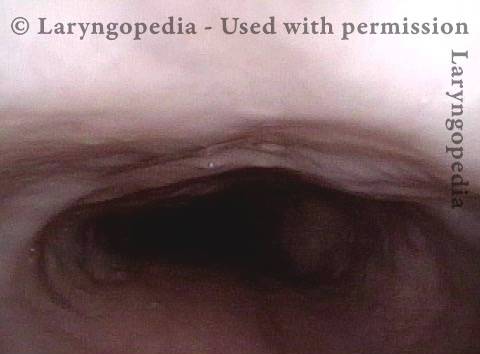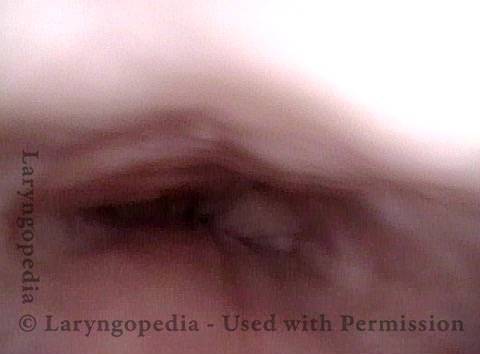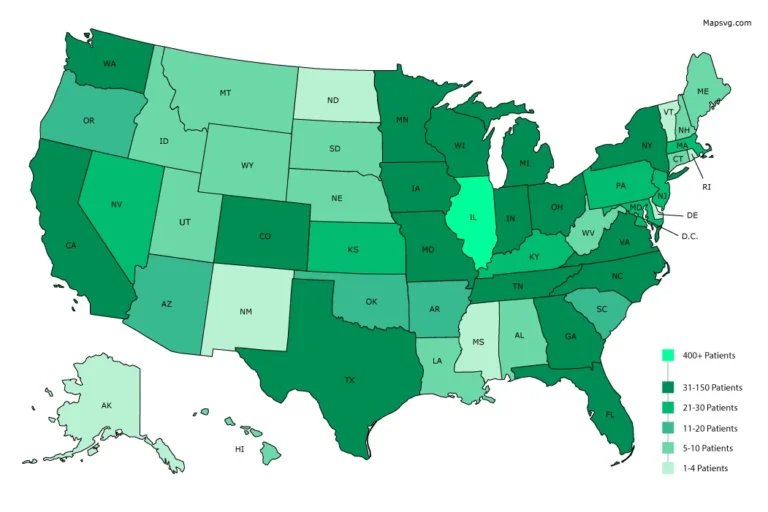Incapacidad Para Eructar
La incapacidad para eructar o eructar ocurre cuando el esfínter esofágico superior (músculo cricofaríngeo) no puede relajarse para liberar la «burbuja» de aire. El esfínter es una válvula muscular que rodea el extremo superior del esófago justo debajo del extremo inferior del conducto de la garganta. Si mira de frente el cuello de una persona, está justo debajo de la “nuez de Adán/Eva”, directamente detrás del cartílago cricoides.
Si desea ver esto en un modelo, mire las fotos a continuación. Ese músculo del esfínter se relaja durante aproximadamente un segundo cada vez que tragamos saliva, comida o bebida. Todo el resto del tiempo se contrata. Siempre que una persona eructa, el mismo esfínter necesita soltarse durante una fracción de segundo para que el exceso de aire escape hacia arriba. En otras palabras, así como es necesario que el esfínter se “suelte” para admitir alimentos y bebidas hacia abajo en el acto normal de la deglución, también es necesario que el esfínter pueda “soltar” para dejar salir el aire hacia arriba para eructar. El nombre formal de este trastorno es disfunción cricofaríngea retrógrada (R-CPD).
Las personas que no pueden liberar aire hacia arriba son miserables. Pueden sentir la «burbuja» asentada en la parte media o baja del cuello sin ningún lugar adonde ir. O experimentan gorgoteos cuando el aire sube por el esófago y descubren que la vía de escape está bloqueada por un esfínter que no se relaja. Es como si el músculo del esófago se agitara y apretara continuamente sin éxito.
La persona desea y necesita tanto eructar, pero continúa experimentando esta incapacidad para eructar. A veces esto puede incluso ser doloroso. Estas personas a menudo experimentan presión en el pecho o distensión abdominal, e incluso distensión abdominal. La flatulencia también es grave en la mayoría de las personas con R-CPD. Otros síntomas menos universales son náuseas después de comer, hipo doloroso, hipersalivación o una sensación de dificultad para respirar con el esfuerzo cuando está «lleno de aire». Muchas personas con R-CPD se han sometido a extensas pruebas y tratamientos sin obtener ningún beneficio. R-CPD reduce la calidad de vida y, a menudo, es socialmente perturbador y provoca ansiedad. Los diagnósticos comunes (incorrectos) son «reflujo ácido» y «síndrome del intestino irritable» y, por lo tanto, los tratamientos para estas afecciones no alivian los síntomas de manera significativa.
Enfoques para tratar la incapacidad para eructar:
Para personas que coincidan con el síndrome de:
- Incapacidad para eructar
- Ruidos de gorgoteo
- Presión e hinchazón en el pecho/abdominal
- Flatulencia
Esta es la forma más eficiente de avanzar: primero, una consulta para determinar si se cumplen o no los criterios para diagnosticar R-CPD. A continuación, un simple estudio de deglución videoendoscópico en el consultorio que incorpora un examen neurológico de la lengua, la faringe (garganta) y los músculos de la laringe y, a menudo, incluye una miniesofagoscopia. Esto establece que el esfínter funciona normalmente en una dirección de deglución hacia adelante (anterógrada), pero no en una dirección de eructo o regurgitación inversa (retrógrada). Junto con los síntomas descritos anteriormente, esta sencilla consulta en el consultorio y la evaluación de la deglución establecen el diagnóstico de disfunción cricofaríngea retrógrada (falta de relajación).
El segundo paso es colocar Botox en el músculo del esfínter que funciona mal. El efecto deseado del Botox en el músculo es debilitarlo durante al menos varios meses. La persona tiene así muchas semanas para comprobar que el problema se soluciona o al menos se minimiza.
La inyección de Botox podría potencialmente realizarse en un consultorio, pero recomendamos la primera vez (al menos) colocarla durante una breve anestesia general en un quirófano ambulatorio. Eso es porque la primera vez, es importante responder a la pregunta de manera definitiva, es decir, que el problema es la incapacidad del esfínter para relajarse cuando se le presenta una burbuja de aire desde abajo. Además, según una experiencia con más de 1020 pacientes en julio de 2022, una sola inyección parece «entrenar» al paciente a eructar. Aproximadamente el 80% de los pacientes han mantenido la capacidad de eructar mucho después de que se haya disipado el efecto del Botox. Es decir, mucho más allá de los 6 meses desde el momento de la inyección.
Los pacientes tratados por R-CPD como se acaba de describir deberían experimentar un alivio espectacular de sus síntomas. Y para repetir, nuestra experiencia en el tratamiento de más de 1020 pacientes (y contando) sugiere que esta sola inyección de Botox permite que el sistema se «reinicie» y es posible que la persona nunca pierda su capacidad para eructar. Por supuesto, si el problema reaparece, la persona podría optar por seguir tratamientos adicionales con Botox, o incluso podría optar por someterse a una miotomía cricofaríngea con láser endoscópica. Para obtener más información sobre esta afección, consulte la descripción del Dr. Bastian de su experiencia con los primeros 51 de su número de casos mucho mayor.
Seminario web R-CPD + preguntas y respuestas
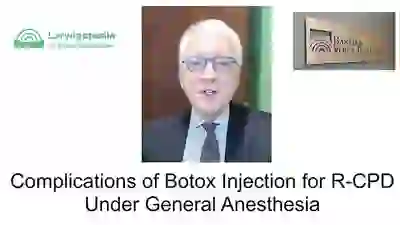
Teleconversación con el Dr. Bastian
Lifting the CPM for a R-CPD Injection
These are intra-operative photos of one of nearly 1500 persons treated for R-CPD as of September 2023. This sequence shows several things: The dilated, “always open” esophagus distal (below) the muscle; how to identify the cricopharyngeus muscle; and one way of injecting it.
Above the CPM (1 of 5)
Above the CPM (1 of 5)
Ridge of the CPM (2 of 5)
Ridge of the CPM (2 of 5)
Exposed CPM ( 3 of 5)
Exposed CPM ( 3 of 5)
CPM Palpated ( 4 of 5)
CPM Palpated ( 4 of 5)
Botox injection ( 5 of 5)
Botox injection ( 5 of 5)
¿Dónde está el músculo cricofaríngeo?
Cricopharyngeus Muscle (1 of 3)
Cricopharyngeus Muscle (1 of 3)
Open Cricopharyngeus Muscle (2 of 3)
Open Cricopharyngeus Muscle (2 of 3)
Closed (3 of 3)
Closed (3 of 3)
Hallazgos Esofágicos
Aortic shelf (1 of 3)
Aortic shelf (1 of 3)
Bony spur emerges due to stretched esophagus (2 of 3)
Bony spur emerges due to stretched esophagus (2 of 3)
Stretched esophagus due to unburpable air (3 of 3)
Stretched esophagus due to unburpable air (3 of 3)
Distensión Abdominal de R-CPD
Gastric Air Bubble (1 of 3)
Gastric Air Bubble (1 of 3)
Bloated Abdomen (2 of 3)
Bloated Abdomen (2 of 3)
Non-bloated Abdomen (3 of 3)
Non-bloated Abdomen (3 of 3)
Una Rara «crisis abdominal» Debido a R-CPD (incapacidad para eructar)

Este joven tenía una crisis abdominal relacionada con R-CPD. Ha tenido síntomas de por vida de R-CPD clásico: incapacidad para eructar, gorgoteo, hinchazón y flatulencia. Durante un momento de particular incomodidad, lamentablemente tomó un “remedio” que era carbonatado. Aquí se ve una enorme burbuja de aire en el estómago. Muchos de sus intestinos están llenos de aire y presionados hacia arriba y hacia su derecha (a la izquierda de la foto, en la flecha). La presión interna dentro de su abdomen también cortó su capacidad de expulsar gases.
X-Ray of Abdominal Bloating (1 of 2)
X-Ray of Abdominal Bloating (1 of 2)
No puedo eructar: Progresión de la hinchazón y la distensión abdominal; Un ciclo diario para muchos con R-CPD
Esta joven tiene los síntomas clásicos de R-CPD: el síndrome de no poder eructar. Temprano en el día, sus síntomas son mínimos y el abdomen está en la «línea de base» porque se ha «desinflado» a través de la flatulencia durante la noche. En esta serie se ve la diferencia en su distensión abdominal entre temprano y tarde en el día. Las imágenes de rayos X muestran la notable cantidad de aire retenido que explica su hinchazón y distensión. Su progresión es bastante típica; algunos con R-CPD se distienden incluso más de lo que se muestra aquí, especialmente después de comer una comida copiosa o consumir algo carbonatado.
Side view of a bloated abdomen (1 of 6)
Side view of a bloated abdomen (1 of 6)
Front view (2 of 6)
Front view (2 of 6)
Greater Distention (3 of 6)
Greater Distention (3 of 6)
Front view of bloating stomach (4 of 6)
Front view of bloating stomach (4 of 6)
X-ray of trapped air (5 of 6)
X-ray of trapped air (5 of 6)
Side view (6 of 6)
Side view (6 of 6)
Dificultad para Respirar Causada por no Eructar (R-CPD)
Las personas que no pueden eructar y tienen el síndrome R-CPD completo a menudo dicen que cuando la hinchazón y la distensión son particularmente malas, y especialmente cuando tienen una sensación de presión en el pecho, también tienen una sensación de dificultad para respirar. Dirán, por ejemplo, “Soy un [cantante, o corredor, o ciclista o _____], pero mi habilidad está muy disminuida por R-CPD. Si estoy compitiendo o actuando, no puedo comer ni beber durante las 6 horas anteriores”. Algunos incluso dicen que no pueden completar un bostezo cuando los síntomas son particularmente graves. Las radiografías a continuación explican cómo la incapacidad para eructar puede causar dificultad para respirar.
